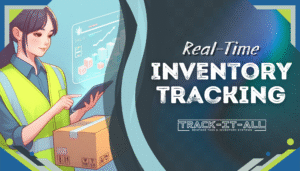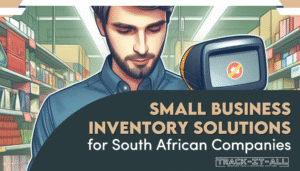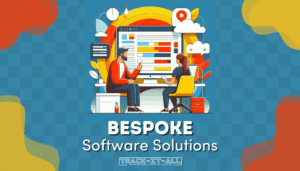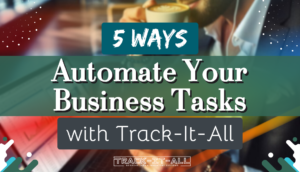In today’s fast-paced work world, being productive is key. It helps professionals do well in their careers. By using smart techniques and the right mindset, you can work better and reach your goals faster.
This article shares 10 ways to boost productivity. It gives you tips to use your time and resources wisely. You’ll learn how to set goals, focus on what’s important, and avoid distractions. These tips will help you work more efficiently and get better results.
By following these strategies, you can make your workday more productive. This leads to happier work and career growth. Whether you’re an employee or a manager, being good at productivity is crucial for success today.
Track it all is a top tool for tracking productivity. It shows how good time management and task focus can improve work. With the right tools and methods, you can make your work smoother, less stressful, and more successful.
Key Takeaways
- Set clear, measurable goals and break them down into achievable tasks
- Prioritise tasks based on importance and urgency
- Minimise distractions and create a focused work environment
- Invest in continuous learning and skill development
- Maintain a healthy work-life balance and practice self-care
Mastering Time Management and Prioritisation
Effective time management and prioritisation are key to boosting productivity and reaching our goals. By mastering these skills, we can make the most of our time. This helps us excel in both our personal and professional lives. Let’s look at some essential strategies for setting clear goals, using time management tools, and prioritising tasks well.
Setting Clear Goals and Breaking Them Down
The first step is to set clear, achievable goals. We suggest using the SMART framework: Specific, Measurable, Achievable, Relevant, and Time-bound. SMART goals help us stay focused and track our progress. It’s also important to break down big goals into smaller tasks to stay motivated and avoid feeling overwhelmed.
Research shows setting specific goals can boost productivity by up to 25%. By defining what we want to achieve and when, we create a roadmap for success. Breaking down goals into smaller tasks also helps us keep moving forward and celebrate our achievements.
Utilising Time Management Tools and Techniques
Time management tools and techniques can greatly improve our productivity and organisation. Tools like Trello, Todoist, and Google Calendar help us organise tasks, set deadlines, and manage our time well. These tools also make collaboration easier and help us avoid procrastination.
The Pomodoro method is another effective technique. It involves working in 25-minute chunks with short breaks in between. This method keeps us focused and motivated, preventing burnout. Using digital calendars and automating tasks can also save time and boost efficiency, as shown in this article on mastering Microsoft Excel.
Prioritising Tasks Based on Importance and Urgency
Prioritising tasks is key to effective time management. The Eisenhower Matrix is a powerful tool for categorising tasks. It divides tasks into four quadrants based on their importance and urgency:
| Urgent and Important | Important but Not Urgent |
|---|---|
| Crises, pressing problems, deadline-driven tasks | Long-term planning, relationship building, personal development |
| Urgent but Not Important | Neither Urgent nor Important |
| Interruptions, meetings, activities that can be delegated | Time-wasters, trivial tasks, unproductive activities |
By focusing on tasks in the first two quadrants, we can boost our productivity and achieve our goals more efficiently. Remember, being busy doesn’t always mean we’re being effective. Our goal should be to achieve results, not just complete tasks.
The key is not to prioritise what’s on your schedule, but to schedule your priorities. – Stephen Covey
Mastering time management and prioritisation can greatly improve our productivity, reduce stress, and lead to greater fulfillment. By setting clear goals, using time management tools, and prioritising tasks well, we can excel at work and achieve a healthy work-life balance.
10 ways to boost your productivity at work
In today’s fast-paced work environment, finding ways to maximise productivity is key. By using these ten strategies, we can boost our productivity at work and excel in our roles.
Minimising Distractions and Improving Focus
One way to boost productivity is to cut down on distractions at work. Get rid of time-wasters like unnecessary meetings and social media. Create a focused work environment by setting boundaries and telling others when you’re available.
On average, people focus for only 12 minutes before getting distracted. Avoid multitasking, which can drop productivity by 40%. Stay focused and avoid distractions.
Embracing a Positive Mindset and Work Environment
A positive work environment boosts productivity and well-being. Practice gratitude and celebrate achievements. Create a supportive work culture.
Stay resilient and see challenges as opportunities for growth. A well-organised work environment, including a comfortable desk, also helps. This can improve productivity and well-being.

Investing in Continuous Learning and Skill Development
Continuous learning is essential to stay competitive and productive. Stay updated on industry trends and learn new skills. This not only improves performance but also opens up new opportunities.
By expanding our knowledge, we can tackle challenges better. This contributes to the success of our organisation.
Cultivating Effective Communication and Collaboration
Good communication and collaboration are crucial for productivity. Practice active listening and articulate ideas clearly. Use tools like Slack and Microsoft Teams for seamless teamwork.
Open and transparent communication streamlines processes. It helps resolve issues quickly and promotes teamwork towards common goals.
Regular exercise can improve energy levels and focus, contributing to increased productivity at work.
Practising Self-Care and Maintaining Work-Life Balance
Self-care and a healthy work-life balance are vital for sustained productivity. Regular exercise, healthy eating, and enough sleep are key. Stress management and setting clear boundaries between work and personal life prevent burnout.
Breaks during the workday, like a 5-15 minute break every hour, can increase productivity by 16%. Remember, our physical and mental health directly affects our performance.
| Productivity Tip | Impact |
|---|---|
| Setting short-term, achievable goals | Successful goal-setters are more productive than those who don’t set goals |
| Using a calendar to track meetings and deadlines | Assists in workload management, ensuring timely task completion |
| Delegating tasks to others | Allows individuals to focus on high-priority tasks, increasing efficiency |
| Organising folders and files in digital and physical workspaces | Reduces clutter and makes information easily accessible |
| Taking breaks during the workday | Prevents burnout and enhances focus and productivity levels |
By using these strategies and tools like Excel for efficient product list management, we can significantly boost our productivity. Embrace these practices, maintain a positive mindset, and watch your productivity soar.
Conclusion
Boosting productivity at work is a complex task that needs a clear plan. By using the 10 strategies we’ve talked about, like managing time well and learning continuously, we can do better at work. It’s also important to avoid distractions, stay positive, and keep learning new skills.
Companies have a big role in helping employees work better. They should focus on making work a good place to be. This means giving the right tools and support. It also means having a good office setup, like comfy chairs and good lighting.
Using employee productivity software can make things easier. It helps teams work together better and shows how well everyone is doing. This leads to more success for everyone.
Improving productivity at work is a journey that needs effort and a positive attitude. By sticking to these strategies and always looking to improve, we can beat challenges and reach our goals. With the right tools and support, we can make our workplaces better for everyone.







